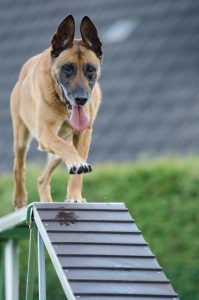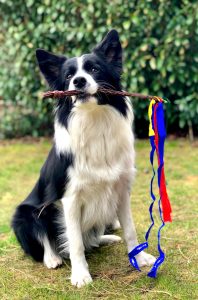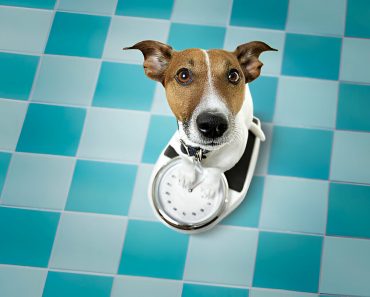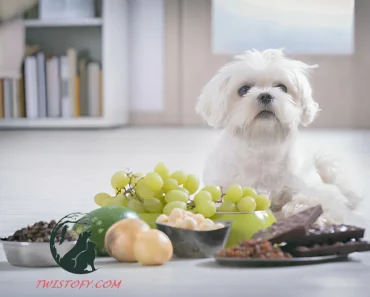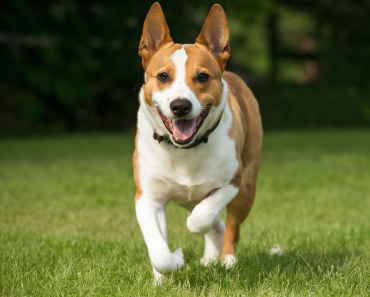Crate training is an effective method for providing your puppy with a safe and secure space, aiding in housebreaking, and preventing destructive behavior when unsupervised. When introduced correctly, the crate becomes a cozy den where your puppy can relax and feel secure.
Start by making the crate inviting with a soft bed and some toys. Gradually introduce your puppy to the crate by encouraging them to explore it with the door open, rewarding them with treats and praise for going inside. Begin with short periods of time and slowly increase the duration as your puppy becomes more comfortable. Use the crate for naps and bedtime, ensuring your puppy has ample opportunities to relieve themselves outside before being crated. Never use the crate as a form of punishment, as this can create negative associations.
The goal is for your puppy to view the crate as a positive, restful space. Consistent crate training helps with housebreaking by teaching your puppy to hold their bladder, as dogs naturally avoid soiling their sleeping area. Over time, the crate will become a valuable tool for managing your puppy’s behavior and ensuring their safety when you’re not able to supervise them directly.
5. House Training
House training, or potty training, is a crucial aspect of training a new puppy to ensure they learn where and when it’s appropriate to relieve themselves. Start by establishing a consistent routine, taking your puppy outside frequently, especially after meals, naps, and play sessions. Choose a designated potty spot in your yard and take your puppy to the same spot each time, as the familiar scent will encourage them to go. Use a command like “go potty” to help them associate the phrase with the action.
When your puppy successfully eliminates outside, reward them immediately with praise, treats, or playtime to reinforce the positive behavior.Exercise patience and consistency, as mishaps are natural during the learning phase. If you catch your puppy in the act of having an accident indoors, calmly interrupt them and quickly take them outside to their potty spot. Clean any indoor accidents thoroughly with an enzymatic cleaner to remove odors and prevent repeat incidents.
Crate training can also aid in house training, as puppies naturally avoid soiling their sleeping area. Ensure the crate is appropriately sized, giving your puppy enough room to stand up, turn around, and lie down comfortably, but not so much space that they can eliminate in one corner and sleep in another.
By maintaining a consistent schedule, providing positive reinforcement, and being patient, your puppy will learn to understand the house training routine, leading to a well-trained and happy companion.
6. Teach Basic Commands
Sit
- Get Your Puppy’s Attention: Capture your puppy’s focus by holding a treat near its nose.
- Lure Them into Position: Move your hand up, causing your puppy’s head to follow the treat and their bottom to lower into a sitting position.
- Mark and Reward: As soon as they sit, say “sit” and immediately give them the treat along with praise.
Stay
- Command and Signal: Have your puppy sit, then hold your hand out in front of you with your palm facing them and say “stay.”
- Take a Step Back: Take one step back. If your puppy stays, return to them and give a treat and praise.
- Increase Distance Gradually: Gradually increase the distance and duration you expect your puppy to stay before rewarding them.
Come
- Use a Leash Initially: Attach a leash to ensure control. Move a few steps away and say “come” in a cheerful tone while gently pulling on the leash.
- Encourage with Treats: When your puppy comes to you, reward them with treats and praise.
- Practice Off-Leash: Once your puppy reliably comes on a leash, practice in a safe, enclosed area off-leash.
Down
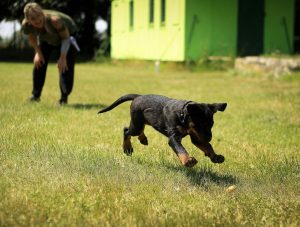
Puppy Training,Puppy Training
- Get Your Puppy to Sit: Start with your puppy in a sitting position.
- Lure Them Down: Hold a treat in front of their nose, then slowly move your hand to the ground.
- Mark and Reward: As soon as your puppy’s elbows touch the ground, say “down” and give the treat and praise.
General Tips
- Short Sessions: Keep training sessions short, around 5-10 minutes, to match your puppy’s attention span.
- Frequent Repetition: Practice commands multiple times a day in different environments to reinforce learning.
- Positive Reinforcement: Always reward your puppy for correct behavior with treats, praise, or play.
- Patience and Consistency: Be patient and consistent. Puppies learn at different rates, and regular practice is key.
7. Avoid Negative Reinforcement
Why Avoid Negative Reinforcement?
- Builds Fear and Anxiety: Punishing a puppy can create fear and anxiety, making them afraid of you and hesitant to engage in training sessions.
- Damages Bond: Negative reinforcement can harm the trust and bond between you and your puppy, making it harder to train and communicate effectively.
- Encourages Aggression: Puppies that are frequently punished may develop aggressive behaviors as a defensive response.
- Hinders Learning: Fear and stress from negative reinforcement can hinder a puppy’s ability to learn and retain new information.
Effective Alternatives to Negative Reinforcement
- Positive Reinforcement: Reward your puppy for good behavior with treats, praise, or playtime. This encourages them to repeat the behavior you want.
- Redirection: When your puppy exhibits unwanted behavior, calmly redirect them to a more appropriate activity. For example, if they are chewing on furniture, provide a chew toy instead.
- Ignore Unwanted Behavior: Sometimes, ignoring minor unwanted behaviors can be effective. Puppies often seek attention, and ignoring them when they misbehave can discourage the behavior.
- Set Clear Boundaries: Establish clear and consistent rules for your puppy. Employ positive reinforcement to instruct them on acceptable behaviors.
- Create a Positive Environment: Ensure your puppy’s environment is safe and enriched with toys and activities to prevent boredom and destructive behavior.
Steps to Implement Positive Methods
- Consistency: Be consistent with commands and rewards. Ensure all family members follow the same rules and training methods.
- Patience: Training takes time, and puppies have short attention spans. Be patient and keep sessions short and enjoyable.
- Calmness: Remain calm and composed when dealing with unwanted behavior. Yelling or showing frustration can scare your puppy and be counterproductive.
- Frequent Breaks: Puppies can become overwhelmed easily. Provide frequent breaks during training to keep them engaged and happy.
- Praise and Affection: Use praise and affection generously to reinforce good behavior. Positive attention is a powerful motivator for puppies.
8. Set Boundaries
Why Setting Boundaries is Important
- Prevents Confusion: Clear boundaries prevent your puppy from becoming confused about what is allowed and what is not, making training more effective.
- Promotes Safety: Boundaries help keep your puppy safe by preventing them from accessing areas or items that could be harmful.
- Establishes Good Behavior: Early boundary setting helps instill good habits that will carry into adulthood, promoting a well-behaved dog.
- Reduces Stress: Knowing what to expect reduces stress for your puppy and helps them adapt to their new environment more comfortably.
How to Set Boundaries
- Define Areas: Decide which areas of your home are off-limits to your puppy. Use baby gates or closed doors to restrict access to these areas.
- Use Consistent Commands: Teach your puppy commands like “no,” “leave it,” and “off” to help them understand which behaviors are unacceptable.
- Create a Safe Space: Provide your puppy with a designated safe space, such as a crate or a specific room, where they can relax and feel secure.
- Supervise and Correct: Supervise your puppy closely, especially in the early stages, and gently correct unwanted behaviors by redirecting them to appropriate activities.
- Establish a Routine: Consistent routines for feeding, potty breaks, playtime, and training help your puppy understand the structure and expectations of their day.
Steps to Implement Boundaries
- Introduce Gradually: Gradually introduce boundaries and rules, ensuring your puppy understands and can adapt to them without becoming overwhelmed.
- Use Positive Reinforcement: Reward your puppy with treats, praise, and affection when they respect boundaries and follow rules. This reinforces good behavior.
- Be Patient and Consistent: Consistency is key. Ensure all family members enforce the same rules and boundaries to avoid confusing your puppy.
- Redirect Unwanted Behavior: If your puppy crosses a boundary or engages in unwanted behavior, calmly redirect them to a more appropriate activity or location.
- Practice Regularly: Regularly practice commands and reinforce boundaries to help your puppy remember and adhere to the rules.
Example: Teaching “Off”
- Identify the Behavior: If your puppy jumps on furniture or people, decide on the command you’ll use, such as “off.”
- Use the Command: When your puppy jumps up, say “off” in a firm but calm voice.
- Reward Compliance: Once your puppy has all four paws on the ground, immediately reward them with a treat and praise.
- Repeat: Consistently use the command and reward system every time the behavior occurs to reinforce the boundary.
9. Provide Mental and Physical Stimulation

Puppy Training, Puppy Training
Mental Stimulation
- Interactive Toys: Use puzzle toys and treat dispensers to challenge your puppy mentally. These toys promote problem-solving skills and provide entertainment for your puppy.
- Training Sessions: Regular training sessions not only teach your puppy new skills but also provide mental stimulation. Teach tricks, obedience commands, and even scent games to keep their mind engaged.
- Hide and Seek: Hide treats or toys around the house or yard and encourage your puppy to find them. This game stimulates their sense of smell and provides mental enrichment.
- Rotate Toys: Rotate your puppy’s toys regularly to keep them novel and exciting. This prevents boredom and maintains your puppy’s interest in their toys.
- Socialization: Regularly expose your puppy to new people, animals, and environments. Socialization provides mental stimulation and helps your puppy become well-adjusted and confident.
Physical Stimulation
- Outdoor Playtime: Take your puppy for daily walks, play fetch in the yard, or go for hikes in nature. Outdoor activities provide essential physical exercise and mental stimulation.
- Indoor Games: Play indoor games such as tug-of-war, fetch, or hide-and-seek to keep your puppy active and entertained, especially during inclement weather.
- Obstacle Courses: Set up simple obstacle courses using household items like chairs, boxes, and tunnels. Guide your puppy through the course, encouraging them to climb, jump, and explore.
- Swimming: If your puppy enjoys water, swimming is an excellent form of low-impact exercise that provides both physical and mental stimulation. Ensure the water is safe and supervised at all times.
- Playdates: Arrange playdates with other puppies or friendly dogs. Playtime with other dogs not only provides physical exercise but also socialization opportunities.
Tips for Providing Stimulation
- Balance Activity Levels: Tailor the level of activity to your puppy’s age, breed, and health status. Younger puppies may require shorter, more frequent play sessions, while adult dogs may enjoy longer walks or hikes.
- Supervise Play: Always supervise your puppy during playtime to ensure their safety and prevent accidents or injuries.
- Offer Variety: Mix up the types of activities you provide to prevent boredom and engage different senses and skills.
- Consider Your Puppy’s Preferences: Pay attention to your puppy’s preferences and interests when selecting toys and activities. Every puppy is unique, so find what they enjoy most.
- Schedule Regular Playtime: Make time for regular play and exercise sessions in your daily routine. Consistency is key to providing adequate stimulation for your Puppy Training.
10. Be Patient and Persistent
Being patient and persistent is essential when training a new puppy. Training a puppy can be challenging and may require repeated attempts before your furry friend fully understands what you’re trying to teach. Patience allows you to remain calm and understanding, even when progress is slow or setbacks occur. Remember that puppies are like sponges, absorbing information at their own pace, so patience is key to maintaining a positive and nurturing training environment.
Additionally, persistence is vital for reinforcing good behaviors and establishing consistent routines. Consistently practicing commands, socializing your puppy, and setting boundaries helps reinforce learning and instill good habits over time. By being patient and persistent, you’ll build a strong foundation for a well-trained and well-adjusted adult dog while deepening the bond between you and your furry companion.Puppy Training
Bonus Tip: Seek Professional Help if Needed
If you encounter challenges or feel overwhelmed, consider seeking help from a professional dog trainer or attending puppy training classes. Professional guidance can provide valuable insights and support.Puppy Training
By following these tips, you can build a strong foundation for a well-behaved and happy puppy. Enjoy the journey and the special bond you’ll create with your new companion!
